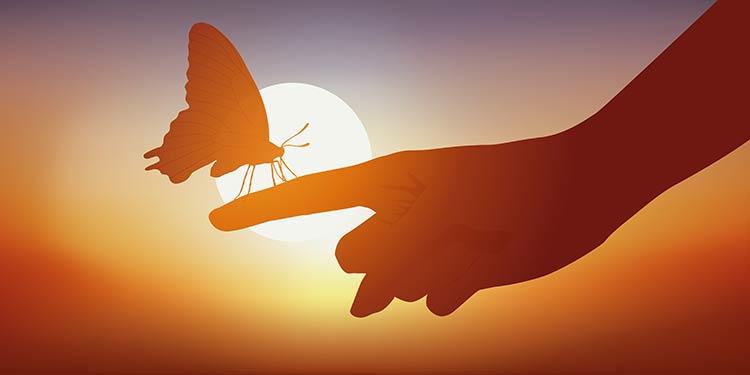Fear and Butterflies
5 Minutes before peer group zoom teaching session where I will teach Recognising the Unsettled Mind – I realise I have an Unsettled Mind.
Body jittery. Heart, announcing its presence and power by thumping. Hard. I can’t focus. Do I really want to do this? What have I let myself in for? Am I going to have a heart attack? What is going on with this? I really need to get to the bottom of this – anxiety is debilitating and frankly, unhelpful. My body demands to be acknowledged as it battles for my attention – it is doing all it can to get me out of my head. OK – I decide to be with my body and listen to it instead of trying to make the feeling go away, or run away from the feeling which of course is impossible. I take a mindful breath. I follow my breathing deep down into my poor scared heart – I fill my heart with a soothing breath. Compassion training kicks in and I offer myself the soothing warmth of compassionate attention. Compassion has the power to transform; my experience is that when deeply felt it can transform running away into running towards… it can transform freeze by warming it and melting it, allowing the cultivation of compassionate action.
I breathe in long and slow and deep – I breathe out the tension – I allow my heart to do its thing, I accept fear
I breathe into the fear, I breathe with the fear,
breathing in I soothe and calm my alerted survival system!
– breathing out I let go of the fear.
The mindful part of my mind talks to my inner fearty (like an inner critic but a small scared version) and this helps. “It’s OK, this is just Mindfulness, you are not under threat, you are safe, the people are kind, you like Mindfulness, you want to share the benefits of Mindfulness, you want to teach Mindfulness, you only need to say words, the others are scared too, its ok”…
Stephen Porges who is an exponent of polyvagal theory – has done some interesting work helping me learn how to ‘hack into’ my primitive stress responses and recover my equilibrium – one way to this is by taking control of the breath – another is to speak to ourselves in a soothing voice tone. For me it has helped to understand a little about the physiology of stress and stress responses in the body. It helped me to see that I was a victim of what could be called imperfect evolution and it wasn’t my fault. My stress response (as with many humans who suffer anxiety) is a bit of an anachronism and I need to learn to work with it instead of fighting it.
Sitting mindfully with the fear I feel it as a hot, uncomfortable, surface tension that I feel the need to run away from but it’s attached to me like a prickly skin. I decide that I will give myself to the jittery feeling and the thumping heart by moving my body because I think it’s telling me to run away and is giving me the energy to do so. I go with the energy. I jump up into mindful movement. Jumping up and down isn’t part of Stephen Porges’ plan but my body decides this is what I need to do! I made ‘jittery’ manifest, by moving and shaking out my arms and legs. I matched my heartbeats with jumping up and down to meet its rhythm. Nobody watching – a great mindful movement experiment! I was so resistant to mindful movement at the beginning of the Mindfulness Training but now I understand it’s part of the training to learn to listen to my body which I have since discovered holds many secrets to my feelings and emotions. I need to be able to do this while I am delivering a mindfulness session too; noticing and feeling my feelings – the ‘noticing what’s happening, while it’s happening’.
Anxiety I have noticed feels a lot like excitement in the body – it delivers similar physiological signals. Maybe I can re-imagine this fear as excitement? Now I have committed to booking the Level 2 teaching retreat in July I do feel a growing excitement and commitment. Just delivering my first stint has really helped to energise my intention and motivation; and my fear is metamorphosing into excitement which is a much more positive feeling – it is linked with enthusiasm, which I have lots of!
I zoomed into my zoom meeting.
I felt fresh and awake after that quick burst of vigour and felt very alive, embodied and earthed as we all met and I sat there looking calm and serene which was comical considering the complete flibbertigibbet I was minutes before. I now felt my feet rooted to the earth.
The group I am blessed with are all so friendly and relaxed, we now have six of us and we try to meet on zoom at least once a week becuase it’s like herding cats trying to find a time that suits everyone. Twice a week means we each get a chance to lead once a week, and there are usuually 3 to 4 of us on any one session. In two hours we have time for 2 people to lead a session. We deliver, do enquiry, and have feedback so it takes some time to unfold and we do this in a leisurely and friendly way. We all ask for honest feedback – we all want to do this properly.
So after a couple of meetings we are like old friends and it really isn’t so scary the thought of messing up is no big deal. We are learning, what to say, how to say it, what order to say it in. Talk, don’t talk, listen, be embodied; the more my thoughts come into mind the less embodied I am the less my session will flow. I need to be the practice. I do the practice too. We are all in this together. When I notice my mind wander, I just say “if your mind has wandered and is caught up in thinking [like mine just was!] just gently bring it back to your breath…nothing wrong”
I was too scared to do any kind of introduction to mindfulness practice at this stage I just wanted to bite the bullet and deliver a short practice to just get me through the fear barrier, and just get it done. I would do a preamble at the next session.
I decided to begin at the beginning with ‘Recognising the Unsettled Mind’, I listened to the practice on the Mindfulness Based Living APP to prepare myself and without a singing bowl to hand I quickly found my nana’s posh green glass grapefruit bowl in the kitchen cabinet which makes a nice ‘ding’ when hit with a chopstick. After a little posture advice and settling guidance, the practice invites us to just ‘be here’ and ‘do nothing’. Can we sit here and do nothing? Apparently not. Our mind takes us here and there, out of the room and miles away in time and place we find ourselves gone. Like ghosts we sit here unaware of the here and now. As I ding the glass………… and again… .. …and again………. we are reminded to gently come back into the room, to reunite mind and body, to be here, now, in our breathing body.
This exercise forms the basis of all subsequent practice. This is the practice of mindfulness training. We are training ourselves initially to just be curious, to just notice what the mind does.
Without judgement, and in a very light way, we watch as the butterfly of our mind flutters off where it will. We gently invite the butterfly to realight on our finger and we set it down gently before us as we watch it in wonder. What will it do next? Before long, it flutters off again. It’s what butterflies do, there is nothing inherently wrong.
Our mind is like the butterfly. If we can approach our mind with the same gentle and childlike curiosity… this is beginner’s mind. I hope to carry this attitude with me throughout my mind training and my teacher training.
Weekly Challenge
This week I invite you to be curious about where your butterfly mind has fluttered off to…
- As you get out of bed
- When you boil the kettle
- When your phone makes a noise
- When a sudden noise disturbs you
Check in with yourself once you catch the thinking. Is there a feeling? An emotion attached to this thought or feeling?
I am writing this thinking that this is going to be difficult to do! During Fay’s course on the Wonder of the Everyday, there was an overwhelming majority feeling with participants that being mindful in the home is much harder than when outdoors. Have you noticed that? And so this really is a challenge. It sounds so easy but really isn’t. Be kind to yourself. The challenge is purely to notice if you can.
Even if you don’t manage to catch yourself at all you will have learned how tricky and elusive the mind is! How easily we are lost in its grasp! and the importance of cultivating a regular mindfulness practice is in order to train our flitty minds. Join our free daily sits if you need some encouragement to practice!
I found a blog from Heather called the Courage to Teach which you can read HERE about leading a Level 1 Teaching retreat with Alan. I found it really interesting. Learning to teach is such an inbetween place between Mindfulness learner and Mindfulness teacher – quite a metamorphic state.
If you are training to teach or maybe you have already passed your MBLC and are teaching already, please do let us know any pearls of wisdom – let’s help each other! Email us or post on our facebook page, we’d love to hear from you.
Here is the Level 2 Retreat which I will be attending: TRAIN TO TEACH LEVEL 2 Retreat Online: JULY 22-28
If, like me, you are between Level 1 teaching and Level 2 of the MBLC and are yet to attend the 5 day MBLC retreat – you can join our Teacher Trainer Membership for £15 which will give you access to monthly support sessions allow you to attend the free teacher membership CPD sessions, and access to the CPD recorded archive on the Teacher members site. Email Helen or Alan at info@mindfulnessassociation.net to sign up.


